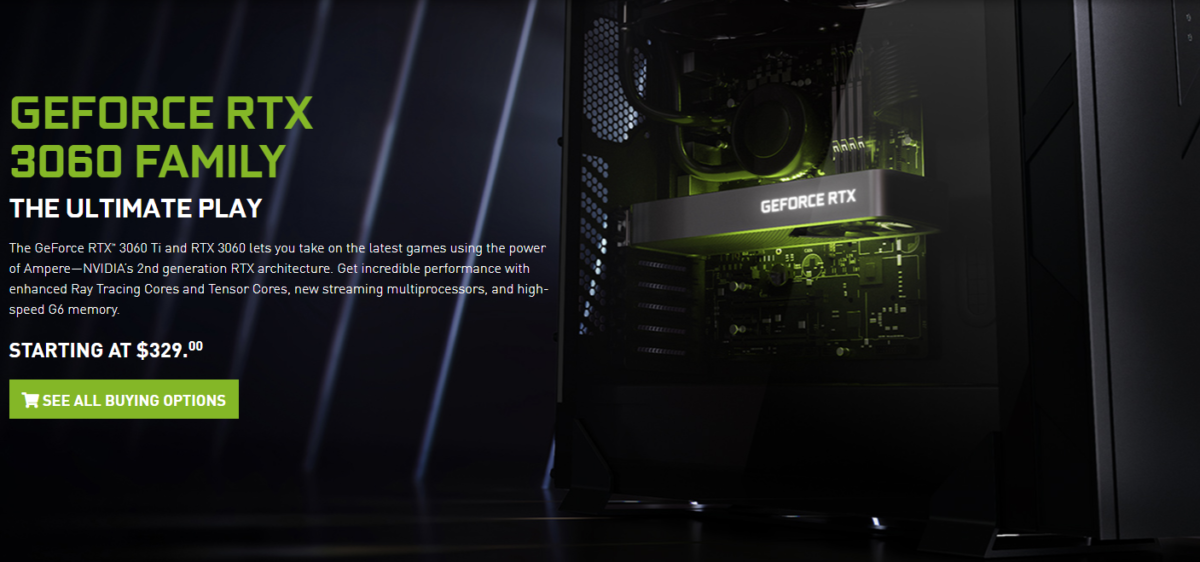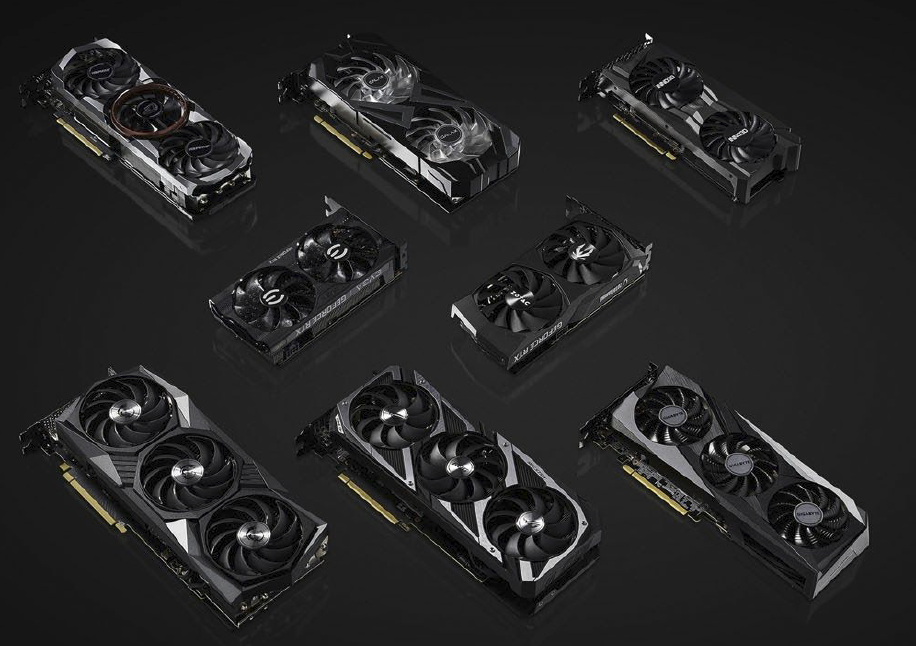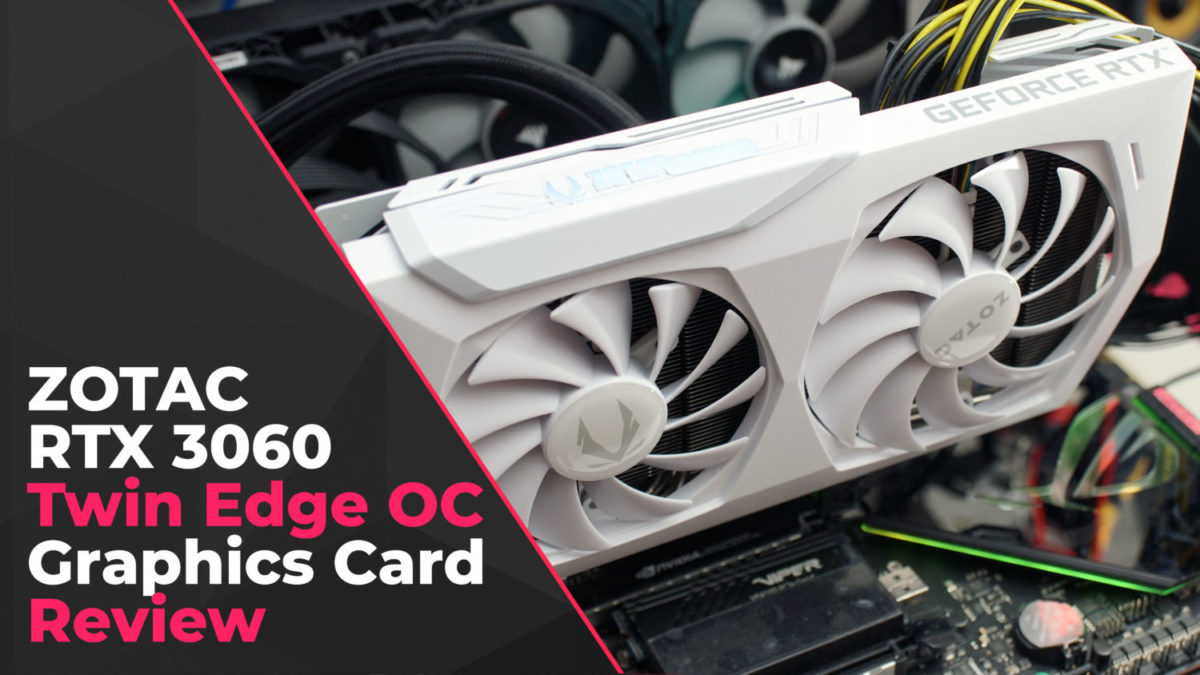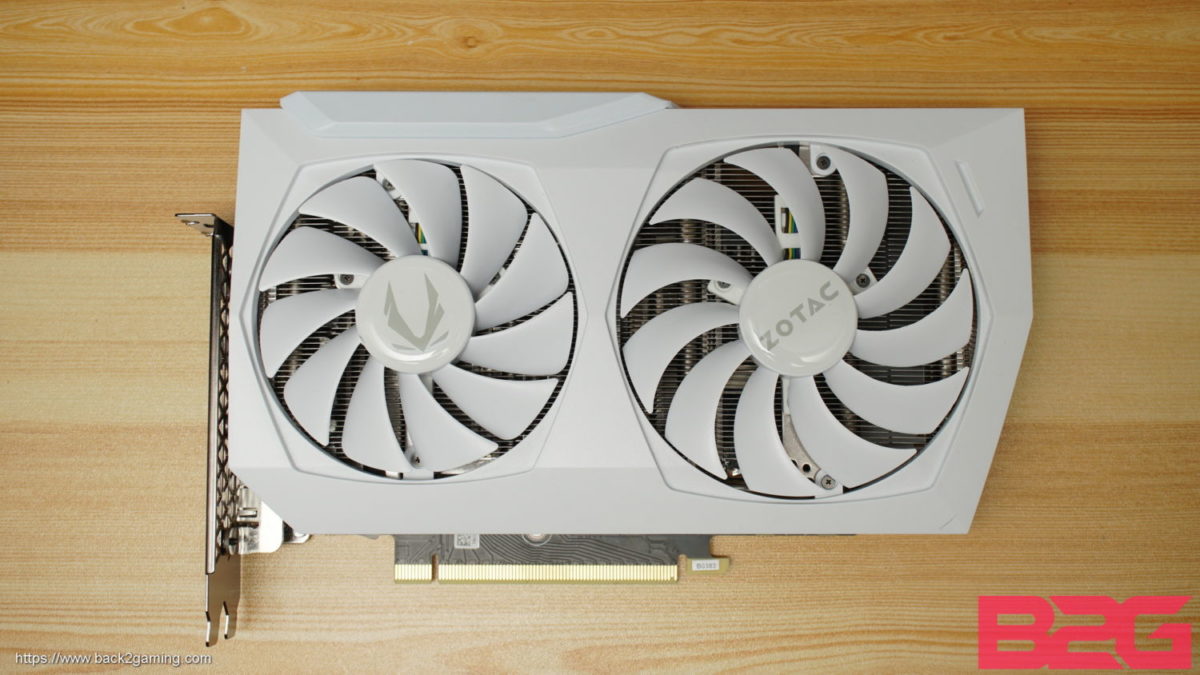The RTX 3060 was announced during CES alongside NVIDIA’s year opener technologies including their RTX 30-series laptop lineup. Today, we have the GeForce RTX 3060 graphics card debuting, which unlike previous launches, will be a partner launch. That means there’s no Founders Edition so we’ll have all partner cards to work with. For this launch we have samples from COLORFUL, ASUS ROG and ZOTAC to share with you but due to incidents beyond our control, driver availability has limited our time to simultaneously release these reviews on launch.
In this review, we’ll take a closer look at the gaming performance of the ZOTAC RTX 3060 Twin Edge White Edition.

Debuting at $329, NVIDIA has bumped up their midrange offering to the $300 mark but promises performance that rivals that of the RTX 2070. This means that it should push 1440p performance in this price as well as pushing high-refresh rate gaming in 1080p as well as making realtime raytracing more prevalent as well. Also, I’ll mention it now, but regarding price, I’ll expand on that on the conclusion after we go over performance.
As NVIDIA targets users still using GTX 10-series and lower to upgrade with the RTX 30 series, the RTX 3060 will be specifically targeting the benevolent GTX 1060. NVIDIA’s reviewer guides says it so, and as we’ve preached for over 10 years now, Steam’s Hardware Survey says a lot about the landscape of gaming as we help it guide us in our reviews and NVIDIA acknowledges that as well. Steam’s Hardware Survey lists the GTX 1060 as the most popular graphics card in the market today 9.38% of the market uses this card. It is followed by the GTX 1050 Ti at 6.79% as of January 2021.
What’s New on the RTX 3060
This means a few things: first, the xx60 class of graphics card are indeed popular as the RTX 2060, the GTX 1660 and GTX 1660 SUPER are also both in the top 10 of Steam users. Its AMD counterpart, the RX 580 is the only AMD card in the top 10. This in turn leads us to our second point: midrange is where its at. Which opens up a bigger story as NVIDIA puts a few things forward with the RTX 3060 namely crippled mining performance which should improve availability (hopefully) and resizable BAR support. This will be the first RTX 30 card for desktop that will support resizable BAR which gives applications more access to the large memory pool of the RTX 3060. This should see varying performance improvement but we’ll focus on that on another article. Other than that, NVIDIA is remind us of their large ecosystem that leverages the power of their RTX 30-series cards including raytracing, RTX Studio, NVIDIA Broadcast, DLSS, and other technologies.
About the GeForce RTX 3060

The RTX 3060 will formally supersede the RTX 3060 and will deliver roughly RTX 2070 performance but with a larger VRAM of 12GB. The RTX 3060 will have 3584 CUDA cores, 112 Gen3 Tensor cores and 28 RT cores. It default to 1777Mhz boost clock and has a 1875Mhz of memory wired to a 192-bit bus. It features nearly double the amount of CUDA cores found on the RTX 3060 and like many RTX 30 series card, the RTX 3060 will have the more recent Tensor cores and RT cores for deep-learning and raytracing.
Against the 3060 Ti, the RTX 3060 has a faster overall boost clock but the RTX 3060 Ti has a wider 256-bit bus for its memory which is less than the RTX 3060 which has 12GB of VRAM but only a 192-bit wide bus. As with all RTX 30 cards, it is on PCI-Express Gen4 and will feature all of NVIDIA’s RTX 30-series software feature like DirectX 12 Ultimate support, DLSS, RTX Studio, Reflex, etc.
The RTX 3060 is rated at 170W. Models exact card power will vary.
About the ZOTAC GAMING RTX 3060 OC White Edition
ZOTAC’s has had a slim port folio for all their RTX 30 releases with the exception of the RTX 3090 and RTX 3080. For the RTX 3070, 3060 Ti and now the RTX 3060, we get the Twin Edge design. While it is arguably the shortest of all the RTX 30 cards that I know of, it is not small in all accounts as it sports the widest heatsink. This wider footprint makes it ideal for smaller microATX or even some ITX towers but narrow cases who can’t house CPU tower heatsinks larger than 150mm may have problems fitting it.
It is exactly 141.3mm wide so it should fit in most cases but will be quite prominently posed on its side for vertical GPU mounts. Its 92mm fans are not RGB illuminated and the only lights on all Twin Edge coolers are on the logo on the side.
Going back to specs, we have an OC card here which is factory tweaked to deliver 1867Mhz of boost clocks. Now one thing to note, this is not just a simple palette swap of the RTX 3060 Twin Edge from ZOTAC. They made it so that it drops the OC nomenclature but dubs it as the White Edition. Not advertised with the White Edition is the fact that it features a factory OC of +60Mhz than the standard ZOTAC RTX 3060 Twin Edge OC which requires me to name it specifically the ZOTAC RTX 3060 Twin Edge White Edition in this review because of that.
The ZOTAC RTX 3060 Twin Edge requires two 8-pin PCIe connector for power.




